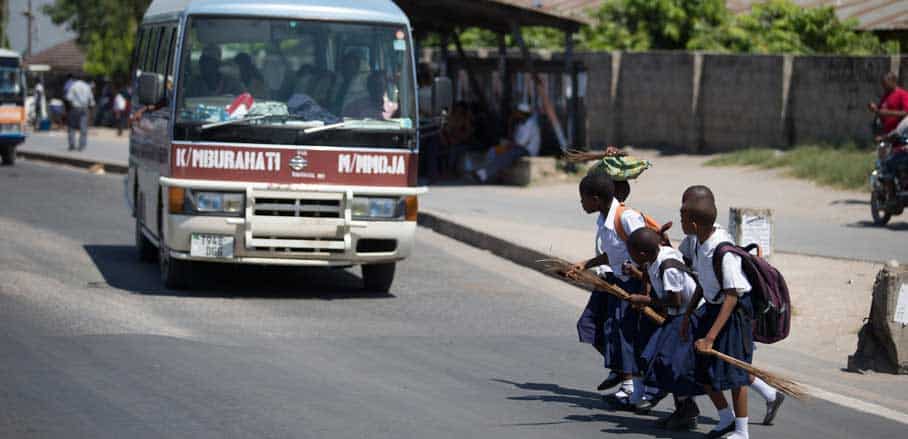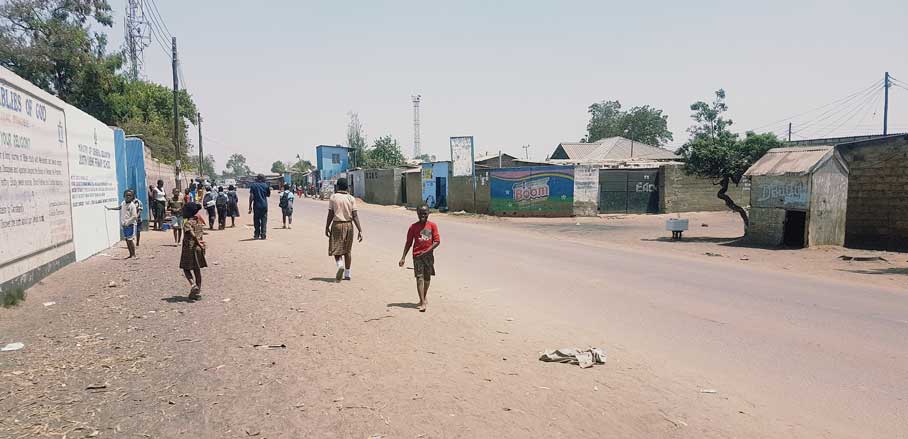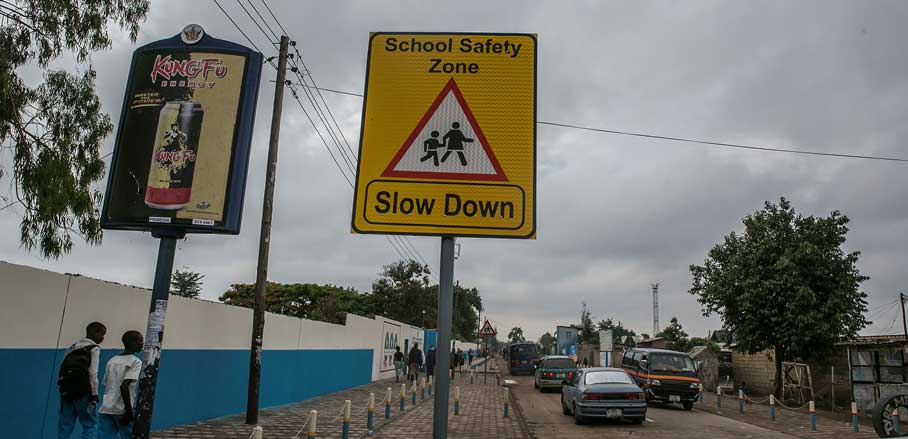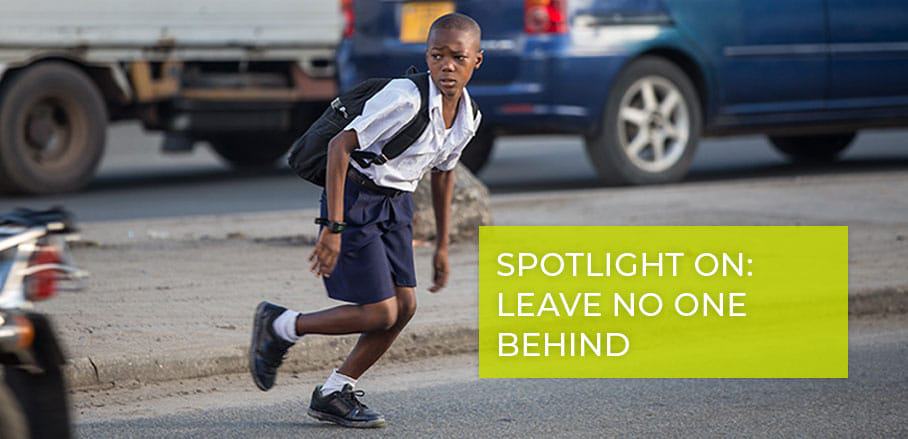Urban Design and Child Road Safety
Walking to school is a life-threatening endeavour to many African children, where road safety measures – if existent at all – fail to recognise the special needs of children. Ayikai Poswayo, Programme Director at Amend, outlines what urban engineering needs to focus on to make cities safer for children.
Walking to School – A Common Danger
Cecilia from Dar es Salaam, Tanzania; Michael from Accra, Ghana; and Lucy from Lusaka, Zambia, are all children under the age of twelve from fast growing cities in sub-Saharan Africa. But they have something else in common – each of them has been involved in a road crash and in each case, the road crash occurred while walking to school.
These three children are all survivors of road crashes. Unfortunately, the same cannot be said of many others. It is estimated that 500 children die every day as a result of road traffic injuries. A child in Africa is twice as likely to die on the road than a child in any other part of the world. Through my work with Amend (a non-governmental organisation dedicated to road safety) on the programme School Area Road Safety Assessments and Improvements (SARSAI) across ten sub-Saharan African countries, I have gained significant insight into the nature of this problem.
The World Health Organization states that road traffic injury is currently the leading cause of death for children and young adults between the ages of 5 and 29. Sub-Saharan Africa has the world’s highest road traffic deaths, despite having the lowest levels of motorisation. Vulnerable road users (pedestrians, cyclists, and motorcyclists) make up more than half of these deaths.
A Public Health Crisis
Road traffic injury, particularly amongst young people in sub-Saharan Africa, is an overlooked plague. It is a public health crisis, whose solutions lie across a variety of sectors. The SARSAI programme attempts to address this often-ignored issue among school-age children from the perspectives of engineering, education, and policy change. I focus here on the engineering aspect.

A journey to school – Dar es Salaam, Tanzania. © Amend/Edward Echwalu
We carried out a survey of some public primary schools across a number of African cities and found that over 80 per cent of the children walk to school. Walking in itself is great and must be encouraged. The problem, however, lies in the fact that our cities are not designed for pedestrians, and certainly not for child pedestrians.
As a first step in the SARSAI process we identify schools where children have been involved in road crashes on a school journey. We then carry out a consultative process with the children and others to understand where the problems lie. After this, we undertake observational studies and quantitative surveys such as speed measurements and pedestrian counts. Using this information, we come up with proposals for road safety improvements in the area around the school where the risk of road traffic injury is high.
Consulting with Children as a Part of Engineering
One of my first tasks working on SARSAI involved a consultation process with children at one of the target schools. One of the children said to me, “we don’t feel safe. We are small and the cars are big’’. And for a moment, I put myself in the shoes of that little child, under 1 metre tall, attempting to cross a road used by a great proportion of trucks. His eye level was barely at the level of the wheels of the vehicle, unable to make eye contact with the driver.
Another child said, “the cars go very fast and don’t stop for us to cross”. And that made me think of two things – the fact that it is generally more difficult for younger children to perceive the speeds of vehicles and make judgements on safe gaps in traffic to cross, and secondly, that children walk more slowly than adults, taking them longer to cross a road. The experience of consulting with children as part of an engineering design process left in my mind no doubt of the importance of doing this: who better to articulate the problems than the most vulnerable and often ignored users?

A journey to school – Abidjan, Côte d’Ivoire. © Amend/Edward Echwalu
The SARSAI proposals we came up with for that school (and others where we work) comprised what should be fundamental for any school area – alerting drivers to the presence of a school through signage, reducing speeds through traffic calming measures, separating pedestrians from traffic with footpaths, and providing safe crossing points. SARSAI is a reactionary engineering response to a child road safety challenge. How come we are not designing for these child pedestrians from the onset?

School before SARSAI – Lusaka, Zambia. © Amend

School after SARSAI – Lusaka, Zambia. © Amend/Edward Echwalu
The Problem: Car-Centric City Designs and Educational Systems
The design of our cities is car-centric and the educational system for our built environment professionals promotes this status-quo. I was trained as a civil engineer in Ghana and I have come to realise that roads engineers are subconsciously trained to think of the motorised vehicle as the primary focus in the design of any road.
Post graduation, I found myself doing this too. Over time, and with the exposure of working outside sub-Saharan Africa for a period, I received some push-back from cycle and pedestrian lobby groups, and I began to realise my folly. I am, however, reminded every day, as I work with engineers from around the continent on SARSAI, that the vast majority of engineers have the same perspective that I used to have: to automatically focus road proposals on the motorised vehicle. Urban policies also appear to allow schools to be located in close proximity to high speed roads such as highways, a situation I have come across too often on the continent.
Urban Designers Need to Rethink their Middle-Class Perspective
It does not help that in many African cities, walking and cycling are perceived as the mode of travel for the underprivileged and as such, regardless of the best intentions, a middle-class urban design professional may not have had much experience of these modes of transport, potentially impacting their ability to design effectively.
Urban designers, and specifically road engineers, need to stop and ask themselves, who are the people I am designing for? How are they currently travelling? How do they experience their cities? Until we ask these questions and train our built environment professionals in a way that equips them with the skills needed to build cities suitable for the most vulnerable, we will continue to lose children to preventable road traffic deaths, and many others will continue to endure needless injury and disability.
- Urban Design and Child Road Safety - 4. July 2019
